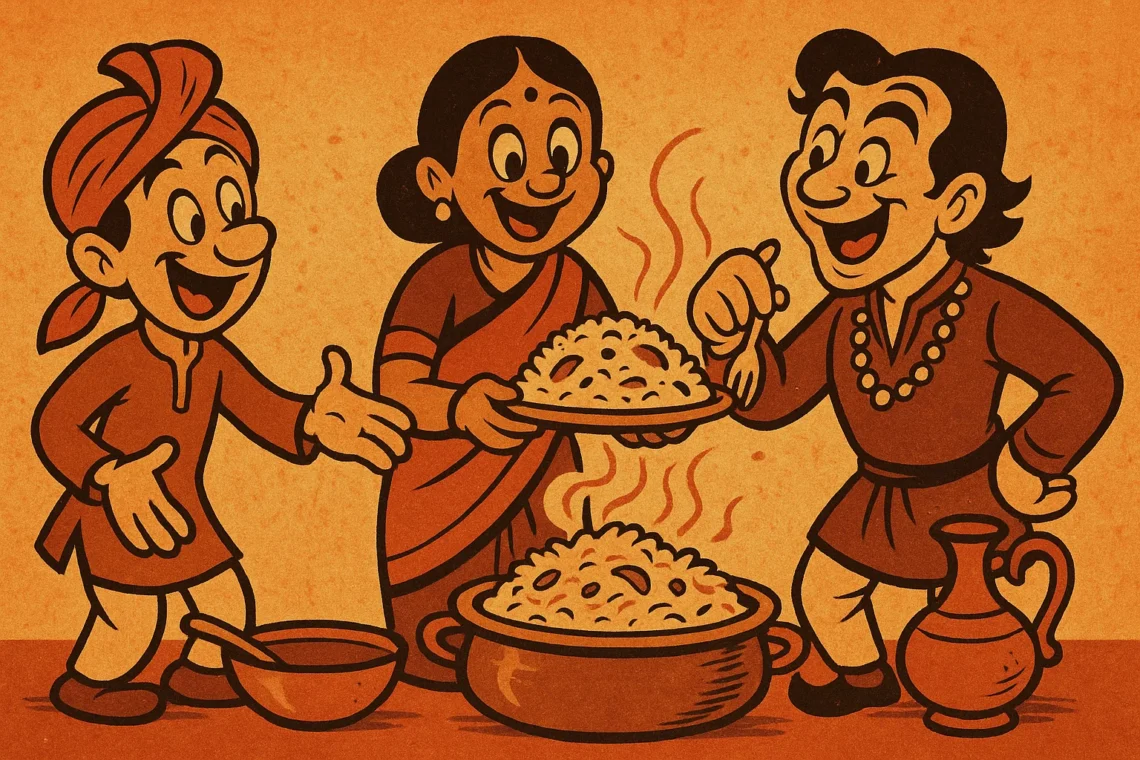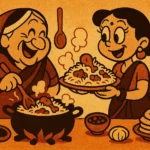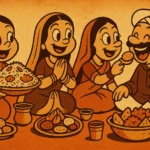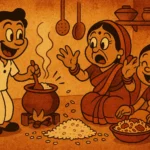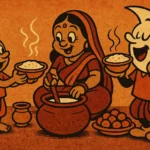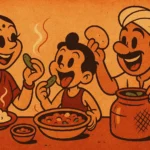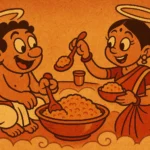Biryani is not just a dish. It’s an experience, a celebration of flavor, a journey across time and culture. Growing up in Mumbai, biryani was more than just dinner—it was a feast. It was the dish we gathered around, the centerpiece of family celebrations, and a reminder of our shared history. It was no coincidence that the moment Bollywood discovered biryani, it became a cinematic icon, a symbol of opulence, love, and, occasionally, melodrama.
But let’s be honest—bollywood biryanis aren’t just about food. They represent so much more. From *Mughal-e-Azam*’s majestic feasts to the more modern, sometimes playful interpretations in today’s masala-soaked rom-coms, biryani is woven deeply into the fabric of Bollywood cinema, often used as a metaphor for love, luxury, and the emotional weight of the moment. It’s more than the spices, rice, and meat—it’s the rich cultural symbolism packed into each bite.
The Majestic Mughal-e-Azam Biryani
Let’s start at the beginning—or at least, the beginning of Bollywood’s iconic biryani journey. I’m talking about the legendary *Mughal-e-Azam*, the film that made biryani synonymous with royal grandeur. Released in 1960, *Mughal-e-Azam* was a spectacle of romance, power, and, of course, food. The story of Prince Salim and Anarkali wouldn’t be complete without the sumptuous feast scenes that featured tables laden with golden platters of biryani. The dish wasn’t just a backdrop to the royal court’s affairs—it was a symbol of abundance, love, and the lavish excess of the Mughal empire. The scene where Salim and Anarkali share a plate of biryani is as iconic as the film itself. The food becomes a metaphor for the unspoken connection between the two lovers, a silent yet potent symbol of their forbidden romance.
The *Mughal-e-Azam* biryani wasn’t just about the ingredients—it was about the spectacle, the opulence. The biryani was cooked by royal chefs, presented with grandeur, and enjoyed by royalty. It made the idea of biryani larger than life. In many ways, that biryani in *Mughal-e-Azam* set the tone for how Bollywood would approach food—it wasn’t just something to eat, it was an experience, a spectacle that could make you feel something. The luxurious portrayal of food became a language in itself, and biryani stood at the center of it all, representing the richness of love, power, and emotion that we often see in Indian cinema.
The Modern Masala Twist
Fast forward to today, and biryani in Bollywood films has evolved. The grandeur of *Mughal-e-Azam* might be a thing of the past, but biryani continues to maintain its place as a symbol of indulgence and intimacy. In more recent films, biryani has been given a new twist—more relatable, a little less royal, but no less powerful. Whether it’s the casual biryani shared between friends in a quick-witted rom-com or the tender biryani scene in a family drama, biryani is still food with meaning. It’s more down-to-earth now, but it carries the same weight it did in the golden days of Bollywood.
Take, for example, the 2016 film *Dear Zindagi*. The simple, wholesome biryani shared between Alia Bhatt’s character and Shah Rukh Khan’s character may not have the same grandeur as the feasts in *Mughal-e-Azam*, but it is no less significant. The biryani is not just a meal—it’s a moment of connection. It’s the food that brings them together, a comfort, a sign of care, and a bond that is silently nurtured between the two characters. And it’s not just the food that matters—it’s the symbolism behind it. The biryani in *Dear Zindagi* serves as an everyday reminder of the simple joys of life, of how food can bring people together in the most unassuming, genuine way.
Bollywood’s modern take on biryani showcases the versatility of the dish. From grand banquets to intimate home-cooked meals, biryani still plays a central role in cinematic storytelling. It’s less about the opulence now and more about the emotions attached to it. But in every variation, from the lavishly plated biryanis of *Mughal-e-Azam* to the humble street food-style biryanis in modern films, it’s clear: biryani in Bollywood is never just food. It’s a metaphor, a vessel for emotions, and often, the unspoken centerpiece of a relationship.
The Symbolism of Biryani
Why does biryani hold such a place of importance in Indian cinema? Perhaps it’s because biryani is, in itself, a symbol of complexity and harmony. Just like the layered narratives of Bollywood films, biryani is a dish that’s complex yet harmonious, where each ingredient brings something unique to the table, yet the result is greater than the sum of its parts. The fragrant rice, the tender meat, the spices that heat the soul—it all comes together in a way that’s both satisfying and evocative.
In Bollywood, biryani symbolizes a lot more than just flavor. It represents the coming together of different elements to create something beautiful, much like the films themselves. Whether it’s the blending of cultures in *Kabhi Khushi Kabhie Gham* or the merging of hearts in *Dilwale Dulhania Le Jayenge*, biryani is often at the center of these moments. It’s food that ties together families, lovers, and even entire nations. It’s as much about the shared experience as it is about the meal itself.
From the Royal Feasts to Our Kitchens
Biryani’s evolution in Bollywood reflects the evolution of the Indian food narrative itself. It’s no longer just a royal dish; it’s become something more personal, more intimate. But no matter how the film industry presents it, biryani remains a symbol of the things that bring us together—the celebration of love, the joy of sharing, and the connection between people. Whether it’s served on golden platters in Mughal palaces or in a modest kitchen in a suburban Mumbai home, biryani remains a meal that speaks volumes. It’s a reminder that food, much like the stories in Bollywood, is never just about the ingredients—it’s about the emotions, the connections, and the moments that make it special.
So the next time you enjoy a plate of biryani, remember that you’re not just eating a dish. You’re savoring a piece of history, a metaphor for the richness of life, and a taste of Bollywood’s culinary magic. And maybe, just maybe, you’ll feel a little closer to the story you’re living in.
Born in Mumbai, now stir-frying feelings in Texas. Writes about food, memory, and the messy magic in between — mostly to stay hungry, sometimes just to stay sane.

